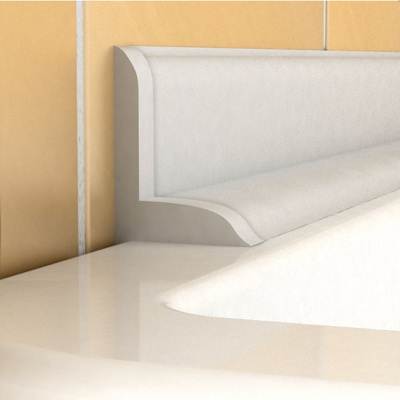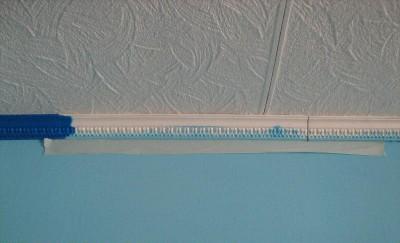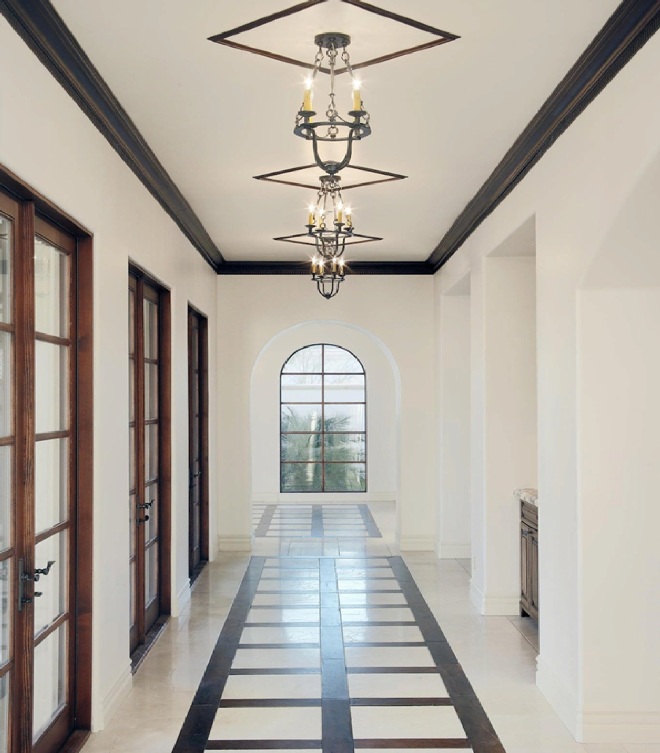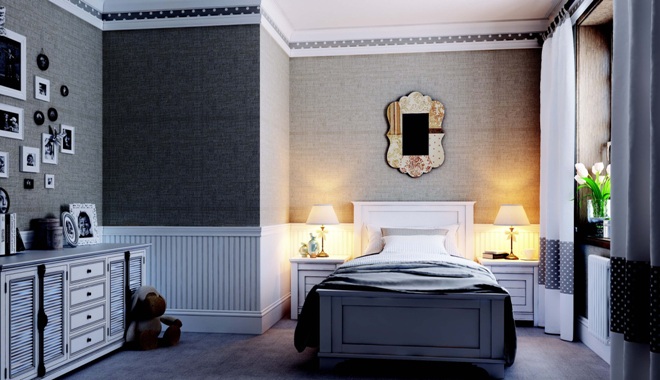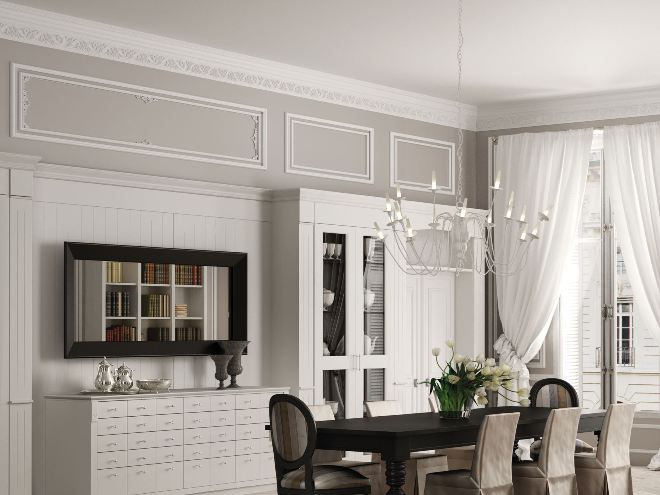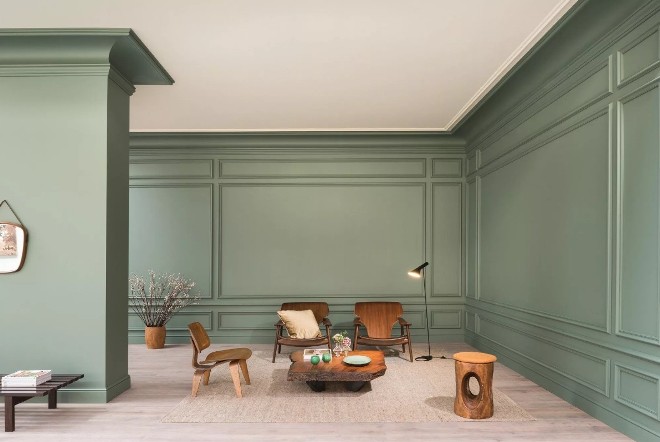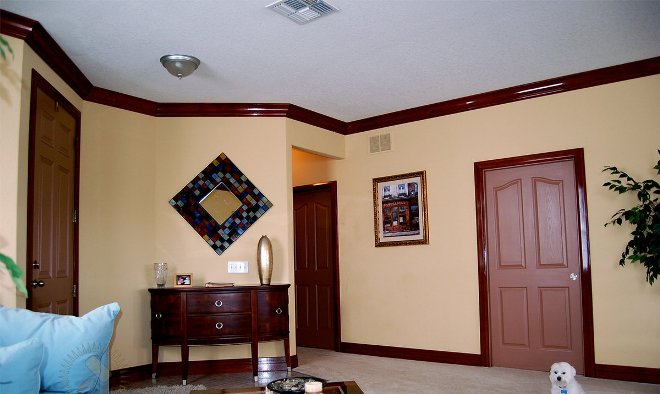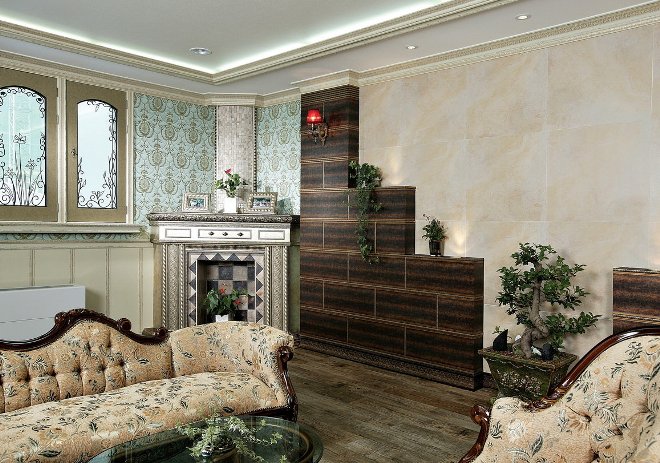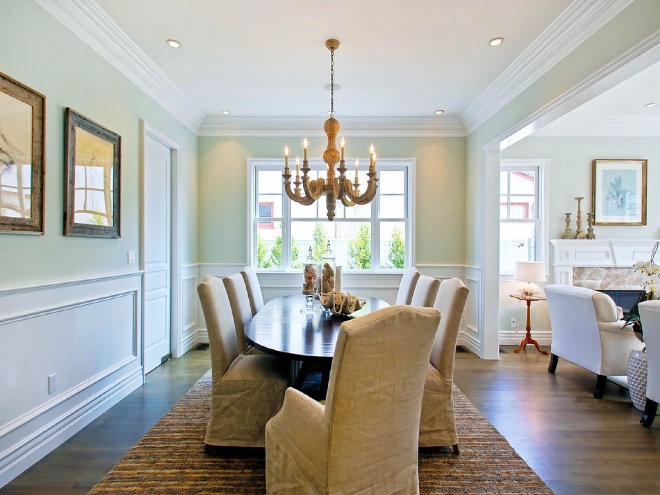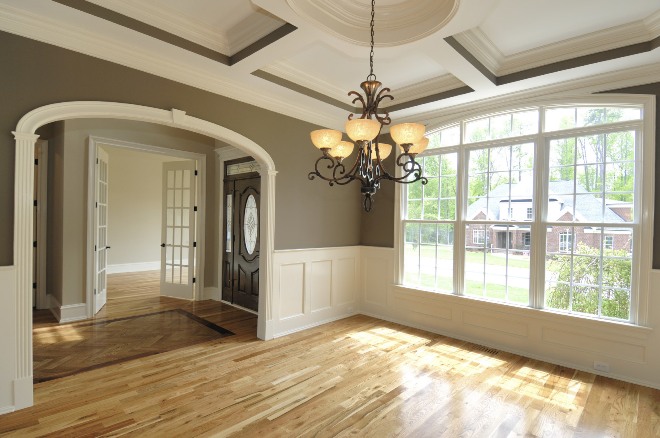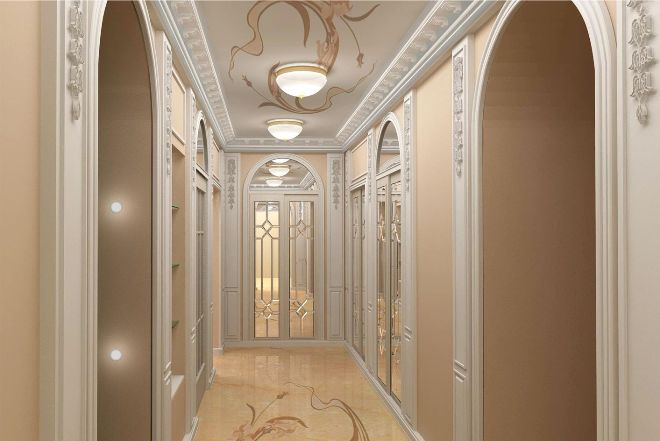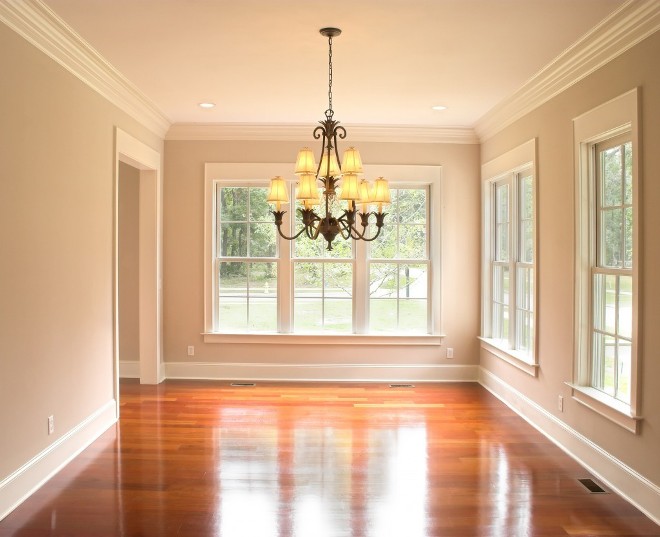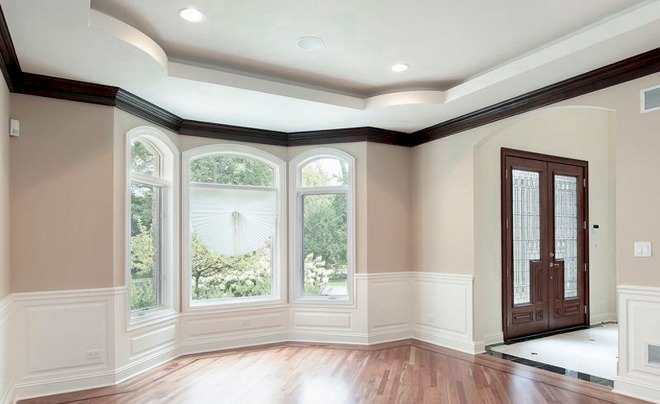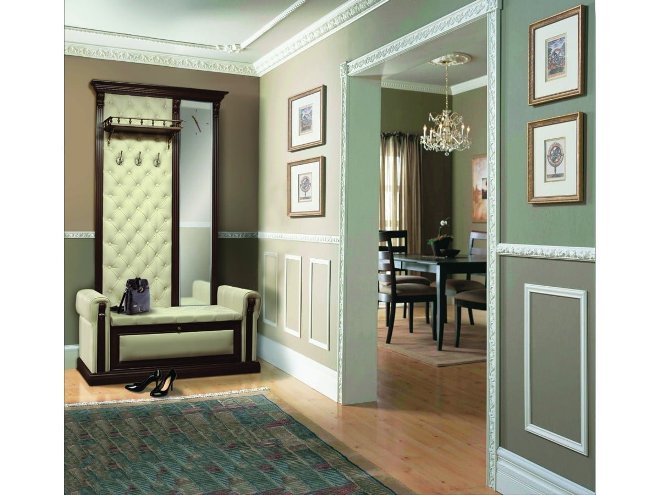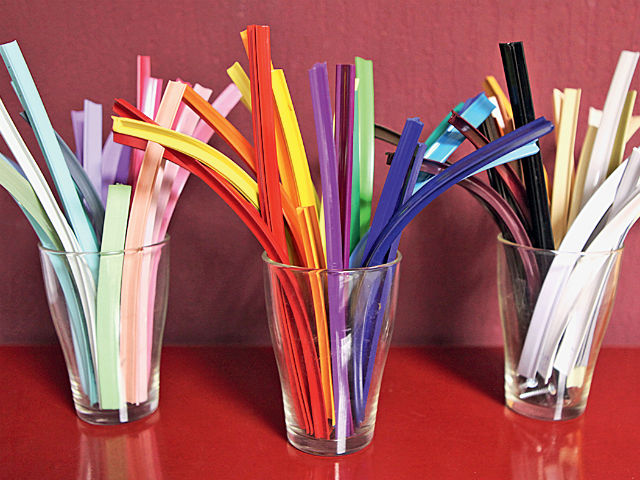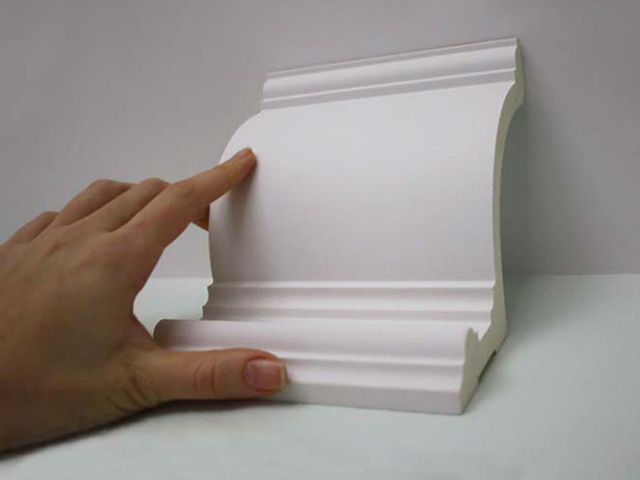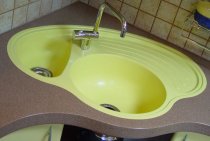Bathroom
Water will not enter the gap
In the bathroom, the skirting board plays a very important role - preventing water from flowing onto the floor and, consequently, flooding the neighbors and damaging the coating, mold and fungi. It is mounted at the junction with the wall by gluing.
The best material is plastic or polyurethane. They are quite tight, well fixed with waterproof glue or sealant. Picking up a bar is easy - the choice of colors is very wide.
The plinth between the bathroom and the polyurethane wall has a lot of advantages:
- complete water tightness;
- does not rot and is easy to clean;
- does not deform - very flexible;
- simple installation;
- resistance to chemicals.
Polyurethane provides a sealed seam, completely protecting the floor and walls from water.
Installing a skirting board in the bathroom: types
Types of installation of the strip between the bathroom and the wall: under the tile and on it
Plinth - an angular profile made of PVC, polyurethane. Polyethylene is less commonly used - this is a border tape, on one side of which glue is applied. It has a lot of color and size options.
border tape
Laying the curb can be done before or after laying the tiles. That is, with the end of all finishing work. It reliably protects the place where the bathtub adjoins the wall.
Features of the curb under the tile:
- wall plinths laid before the start of finishing are more difficult to dismantle - it is impossible to change a curb that has become unusable without destroying the tile;
- more hermetic version.
Features of the overlay plinth:
- easy installation on glue or liquid nails;
- easy to dismantle and replace with a new one;
- if you do not seal the gaps with additional sealant, then moisture can penetrate under the curb.
Features of border tapes:
- simple installation - the corner wall plinth is rolled around the perimeter of the bath;
- reliability;
- variety of colors and sizes.
The choice depends on personal preferences and ease of further use.
Mounting the skirting board between the wall and the bathroom: steps
PVC skirting board installation
The main steps for installing the skirting board after finishing:
- wipe the area where the installation will be done with a cloth soaked in chlorine;
- dry well, you can use a hair dryer for this;
- measure the length and cut the plinth with a miter box at the desired angle (45◦ or 90◦);
- attach the workpiece to the wall to check the correctness of the measurements.
Note! In order not to stain the wall with glue, the plinth should be framed with mounting tape. To do this, the curb is pressed firmly into place.
Then a tape is rolled along its upper and lower edges.
- using a construction gun, glue or liquid nails are applied to the gap;
- gently insert the plinth into the gap and press;
- how to seal the gap between the baseboard and the wall after the glue dries? it is necessary to fill it with a sealant - the plinth is bent with a spatula and the substance is carefully poured into it.
Here is the result
The main features of ceiling plinths
PVC foam ceiling molding
Despite the fact that among the population an element located under the ceiling is commonly called a ceiling plinth, this is not entirely true. The correct name is fillet. However, such a name is a curiosity even for sellers of finishing stores. Therefore, we will also call this device a ceiling plinth.
The most popular material for ceiling plinths is plastic - products made from it are light, easy to use. This is the best option for self-installation without the involvement of specialists.
The most optimal choice is PVC foam fillet.At a relatively low cost, we get a quite decent quality product with a smooth matte surface (see How to join a ceiling plinth: description and recommendations). This suggests that such a product is not afraid of exposure to ultraviolet rays and will not change its color.
How to paint ceiling moldings
Now imagine the rules for painting the baseboard with paint:
It is recommended to paint ceiling plinths before they are fixed under the ceiling. To do this, paper is laid on a surface, such as a table, and a plinth is held over it during painting (see Ceiling plinth Solid: a guarantee of quality and durability).
With a spray gun, you can paint the ceiling plinth easily and efficiently
- For painting, you should use a brush, since it will be difficult to paint over a carved plinth with a complex texture with a roller.
- Complex plinth textures are easier to paint using a spray gun or spray paint. In this case, the paint, unlike applying with a brush, will lay down more evenly and more evenly.
- If the decorative element is already glued to the wall, then before you start painting the ceiling plinths, you will need to stick strips of masking tape on the ceiling and walls along them. The adhesive tape should be glued close to the plinth, which will avoid staining the surfaces with paint. Remove the masking tape after the paint applied to the plinth dries (see Ceiling wooden plinth: advantages, disadvantages and installation features).
Using masking tape when painting ceiling moldings
If there is a possibility that the masking tape will come off as a result along with the wallpaper, you can use another, slightly more complicated, but safe method - applying a wide spatula to the plinth when applying paint. In this case, the spatula is applied close to the plinth from the side of the wall and the lower half of the protected area is painted over, then the spatula is rearranged and the next area is painted, etc. When the bottom plinth is painted, the spatula is applied to the ceiling, close to the top of the plinth, and the upper half is painted in the same way.
Using a spatula when painting ceiling moldings
Thus, we found out what coloring agents are used to paint ceiling plinths, and also voiced a number of subtleties of the process of painting this decorative element. Compliance with the instructions and recommendations presented in the article will allow you to make the interior in the renovated room attractive. Use only high-quality materials, be careful even in small things, and the intended result will not keep you waiting.
Why skirting boards are needed
Many people know that no renovation will look complete without skirting boards. But what is the meaning of these decorative elements?
As you know, any room is a parallelepiped. So, ceiling and wall plinths, first of all, separate its horizontal and vertical planes. The more noticeable this line, the more clearly the planes of the room appear.
In addition, these decorative elements also perform some practical functions, for example, a decorative plinth for the floor is also necessary for the following reasons:
- hide the gaps between the wall and the floor;
- prevent the destruction of the edges of the floor covering.
In the photo - an example of the use of fillets in the interior
In addition, any skirting board provides a smooth and visually appealing transition from one finishing material to another. Therefore, the completeness of the finish appears after the installation of the fillets.
Advice! You can use skirting boards not only on the floor or ceiling, but also on the walls. For example, with their help, transitions from one material to another are made, as well as panels, recesses, etc.
The only thing is that they should be chosen wisely so that the style of the pattern matches the decoration and interior of the room. But, if it is not so difficult to decide on the appearance of the fillets, then the choice of the material from which they are made often raises a number of questions for novice craftsmen.
Therefore, below we will get acquainted with the most common types of these products and their performance.
Advice! For small rooms, narrow skirting boards should be used, and in rooms with high ceilings, on the contrary, wide fillets look harmonious.
Floor wooden plinths
Design and decoration of the ceiling plinth in the interior
The cornice can become both an accent detail in the design of the room, and an additional inconspicuous element. Most types of moldings are produced in white and beige, which is not always pleasing. If you cannot find a colored baguette of the desired configuration, you can choose it from a material that is easily dyed.
The black cornice is considered universal. A simple dark corner will fit into high-tech and modern style. But still, it is not ideal for any interior.
stucco work
Such skirting boards are made of gypsum and installed in high spacious rooms. Exclusive options made by craftsmen to order are unique masterpieces, classics that reflect the high status of the owner of the house and emphasize the luxurious interior. Such solutions are more suitable for halls, but also design ideas boldly combine them with the interiors of the living room and even the bedroom, if the area allows.
painting
Gives the interior exclusivity, elegance. Modern artists will make a work of art out of moldings, taking into account any wishes of the owner of the house. Of course, for a wonderful pattern you will have to pay a round sum.
Patina and gilding
These molding paint options are in harmony in homes filled with luxury, antiques, classic or antique. However, they are also used in more modest apartments, acting as spectacular decorative elements. You just need to skillfully combine them with the general style of the room. Definitely, against the background of a brick wall, they will be out of place. And in combination with expensive wallpapers of saturated color without a catchy pattern, they will become a highlight.
There are many recommendations and tips on how to choose a ceiling plinth. But they all come down to the choice of material that is used to produce the fillet. There are currently many different options available. There are modern products made of plastic, foam, polyurethane. If you follow all the tips, then choosing a ceiling plinth will not cause significant problems.
How to choose the right material
There are no special instructions for buying a floor plinth, however, some recommendations should be considered:
- type of flooring. If you chose parquet or a wooden board for decoration, then the frame must be made of the appropriate material;
- Ceiling heights and room dimensions. If the room is large, and the ceilings in it are not low, then you can choose a high plinth. It will make the room more elegant and beautiful;
- Color design of the interior;
- Product cost.
So, you have already considered the types and some features of the frames, now you should understand the features of their installation.
Varieties of fillets
Ceiling plinth for stretch ceilings can be smooth or embossed. It is made not only from lightweight materials, such as foam or plastic, but also from plaster or wood. At installation of a plinth on a stretch ceiling from heavy materials there are always difficulties - it is impossible to glue gypsum or wood fillets, a special fastening system is needed. Yes, and adjusting such skirting boards to the size of the room is quite difficult.
Home craftsmen for decorating rooms prefer lighter types of ceiling plinth for stretch ceilings:
- foam;
- polyurethane;
- plastic.
Styrofoam
The plinth under the stretch ceiling made of foam plastic is light, comfortable and cheap. It is good to stick it on any wallpaper - the foam will hold firmly.
Fragility and the impossibility of a strong attachment to a not very flat surface are considered small minuses of a foam plinth on a stretch ceiling - it will break. In addition, not all types of adhesives are suitable for foam - under the influence of certain chemicals, the foam structure dissolves.
Polyurethane
Skirting boards for stretch ceilings made of polyurethane are more durable and flexible compared to foam ones. Fillets made of polyurethane can easily be given any shape, rounded, if necessary.
The disadvantage of polyurethane fillets can be considered that it is possible to mount a ceiling plinth made of this material not on all types of wallpaper, but only on those that have increased strength. Many craftsmen recommend installing polyurethane ceiling plinths even before finishing the walls, but even in this case, fillets may sag and an ugly gap may form.
The second disadvantage is the cost - the price of polyurethane skirting boards is more than 2 times higher than the foam finish.
Made of plastic
The plastic finish is considered the best. Flexible, strong and durable, it can imitate various types of wood or other materials. Plastic products can be selected taking into account any interior.
How to glue a foam baseboard
An important factor is also how to glue the foam ceiling plinth with glue. It is worth noting that there are two main options that are used to fix elements. The first is that the installation is done on glue, and the second is more complicated, because putty is used for work.
Adhesives
There are two main types suitable for such work:
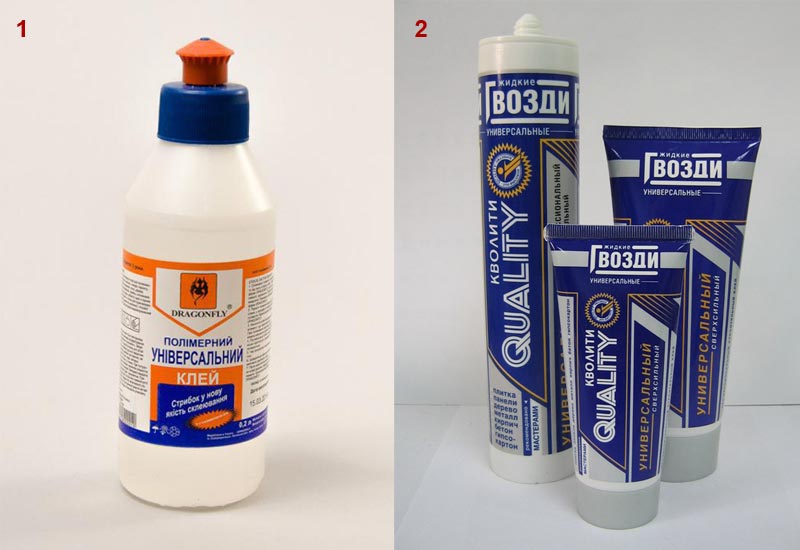
Solutions based on polymers. Polymer mixtures are great for sticking a fillet to a surface with high quality. They are distinguished by good viscosity, as well as fairly quick fixation.
But it is important to consider that some types contain a solvent in their composition. This substance reacts with the foam, corroding it
Therefore, it is important that the label indicates which materials the adhesive can be used on.
Liquid Nails. These are universal compositions used for such events. For work, mainly acrylic mixtures are used. They do not react with the product. There is another type of material - neopropylene. It has an unpleasant odor and releases substances hazardous to health. This option can lead to fragment damage.
putty
Putty mixtures act as a fixing material. But this will require some experience, because the work will require more effort than if glue was used. The fact is that putty performs two tasks at once: with the help of it you can fix the product, as well as hide flaws.
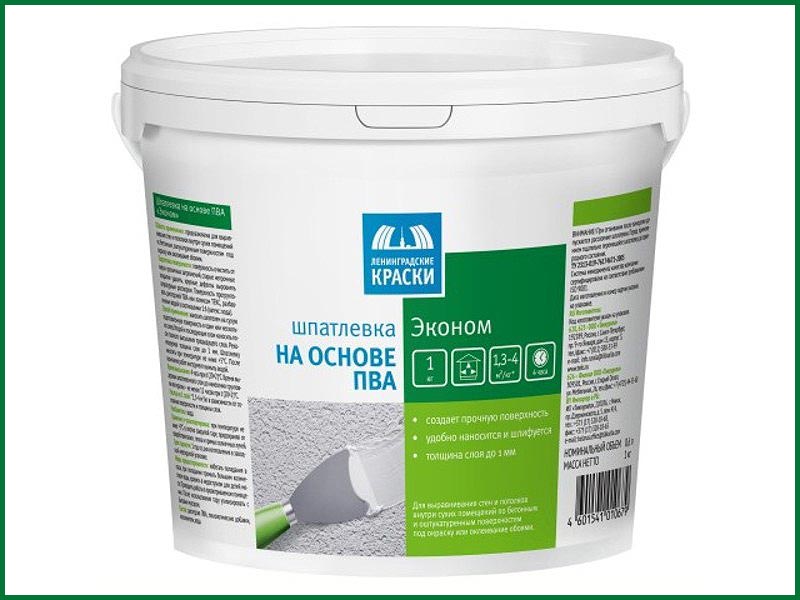
It is much better when the solution is prepared independently. This allows you to glue the skirting boards with high quality, without fear that the parts will peel off. For the manufacture of the adhesive mass, you will need any of the existing dry mixes, water and PVA
It is important to consider that 1 part of PVA is taken for 4 parts of dry matter. All this is kneaded, the right amount of water is added to get a creamy composition.
